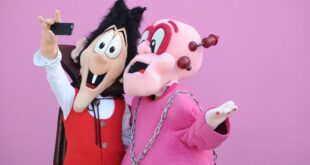Think of the last good story you were told- was it sad? Was it funny? Was it adventurous? Either way, that story left an impression, a memory stamped into your head if you can answer those questions.
In brand PR, storytelling is essential for targeting your audiences. People want to know the backstory, the nitty-gritty stuff about what makes your brand unique. Without a story, your brand is just another brand, it doesn’t stand out in the crowd.
What is Storytelling and How is it Involved in PR?
According to the PRLab, storytelling is defined as “an art that requires creativity, vision, skill, and practice” and is used as a tool to “inform, debate, and discuss.” Storytelling is meant to draw audiences in, making news and content relatable.
Creating a narrative that people can relate to makes them feel connected and special to your brand, thus drawing them in as consumers. Not only does it persuade audiences to like your brand, but also makes you stand out compared to others, increasing your brand visibility altogether. You can’t copy a great story, so having your own unique purpose creates a positive public perception. A PR practitioner’s goal is to “build mutually beneficial relationships between an organization and its audiences”, storytelling bridges that gap (Ade, Critical Mention).
There is quite a bit of media psychology that goes into PR brand storytelling. Did you know that stories are 22 times more memorable than facts and figures? Our neural activity increases 5 times when listening to a story. Storytelling lights up the sensory cortex in your brain, causing the listener to feel, hear, taste, and even smell the story.
Storytelling can be extremely impactful, but it takes strategic thinking and careful planning to be successful. In other words, brands are not going to become overnight successes, one national press release will not cut it.
Important facts to know about Storytelling in PR
Brands need PR to achieve a successful status. Forbes helps break down the important factors to be aware of:
- Earned media: Many people would assume that PR professionals get to work with a nice budget to accommodate for all their needs and desires. PR teams pitch stories to media outlets, journalists, and social media influencers for free. This is what is known as earned media. If the editors and reporters like your pitch, they will use it for their media audience, which gives you brand coverage (for free). Your pitch must be eye-catching and authentic, otherwise journalists and media outlets won’t believe in it and won’t consider it as valuable to their consumers.
- Building Trust: Earned media makes your brand trustworthy. These pitches reflect the PR art of storytelling, meaning they don’t have a sales purpose. They simply have one objective: connect to the audience and make it relevant to them so they trust you.
- Third-Party Validation: Once your story has been adopted by a media outlet, your brand is receiving validation because it is news-worthy to that channel. If it is news-worthy for one channel, most likely other outlets will also find it interesting. By having third-party validation, it exposes your brand to other media outlets, which can lead to larger coverage and visibility.
To complete a successful pitch, you must create a compelling narrative. Forbes sets up this structure as the following:
- Doing something great or extraordinary
- Building a story around that outstanding act
- Fostering strong media relationships over time
- Sharing your story and following up
Using this as a template for your compelling narrative will entice both newbies and loyalist brand followers to pay attention to your brand, and it gets you media coverage. Without it, your story and brand are just another thing to swipe on.
Examples of Great Brand Storytelling
The Land of Land Rovers Campaign: In celebration of Land Rover’s 70th anniversary, the car company breathes life into the true story behind the organization. “The Land of Land Rovers” takes place in a remote area in the Indian Himalayas, the campaign video showcases the local drivers who rely on a “fleet of meticulously maintained 1957 Land Rover vehicles” used for transportation and supplies along the dangerous mountain roads between two villages (Maneybhanjang and Sandakphu).
To really get into the spirit of the story, the campaign team made the village of Maneybhanjang their home for ten days. They got to know the drivers and experienced their everyday lives. This campaign is a brilliant example that a brand’s story is not necessarily their own, but for your customers and supporters. The video entices the viewer with its captivating cinematography, and not only does it tell the stories of real-life people, it also shows the strength of the car’s off-roading capabilities.
Ikea’s Improve Your Private Life Campaign: We all love Ikea for exploring their stores and providing quality furniture for a realistic price. Ikea’s campaign uses humor instead of a deep-rooted background story, and it was a total success. It started with Singapore’s Shelf Help Guru Campaign. Starring Fille Gute as a ‘Shelf-Help Guru’, who wants to help improve Ikea customers’ private lives through ‘shelf discovery’. Ikea Singapore continued the storyline on Facebook with a Shelf Help Guru Contest! Ikea asked customers to ask the Shelf-Help Guru on how to improve their bedroom or bathroom for a chance to win a $50 gift card. This campaign proves the point of, “Don’t be afraid to get personal with your customers”, even if it means poking fun at your own brand. People like transparency and authenticity and Ikea absolutely nailed this one down.
Your brand story can be whatever you want it to be if it’s true and honest.
The Four P’s of Effective Storytelling
It cannot be overlooked that there is a structure to storytelling, and without these four key points your story will not see the success you want.
People: Every story needs a subject. While you could focus on your company, audiences respond better to an individual. This makes the story more personal, and people want to see humanity. This individual is commonly used as the hero of the story, where they are overcoming an obstacle and overcoming the struggle. We saw this in the Land Rover campaign, except it was focused on hard working people instead of an individual.
Places: This is how you set the scene for your story. It could be a company’s location, where their products are being made or where they plan to go in the future. Again, in the Land Rover campaign, they showcased their vehicles off-roading capabilities using a real example in the Indian Himalayas. Check out Burt’s Bees story and you’ll see how location shapes their story and brand identity.
Process / Problem: Depending on your personal brand story, you can either explore the process of creating your products or showcase the issue that your product solves. Forbes says every good story has conflict that the subject faces. If you are selling vegan and cruelty free products, you could share the process of making it or the reason why it needs to be made. For example, Grove Collaborative created a brand of cruelty free and sustainable cleaning products. Their story consists of sustainable needs and why they’re needed as well as focuses on their collaboration with the public (highly appealing to their audiences).
Products: Telling the story to launch a product instead of blatantly selling appeals much more to the public as well. Products go hand in hand with the process. Highlight not only why the product improves the subject’s issue, but how it can also help other people’s struggles.
 SIU PRSSA Southern Illinois University Public Relations Student Society of America
SIU PRSSA Southern Illinois University Public Relations Student Society of America




